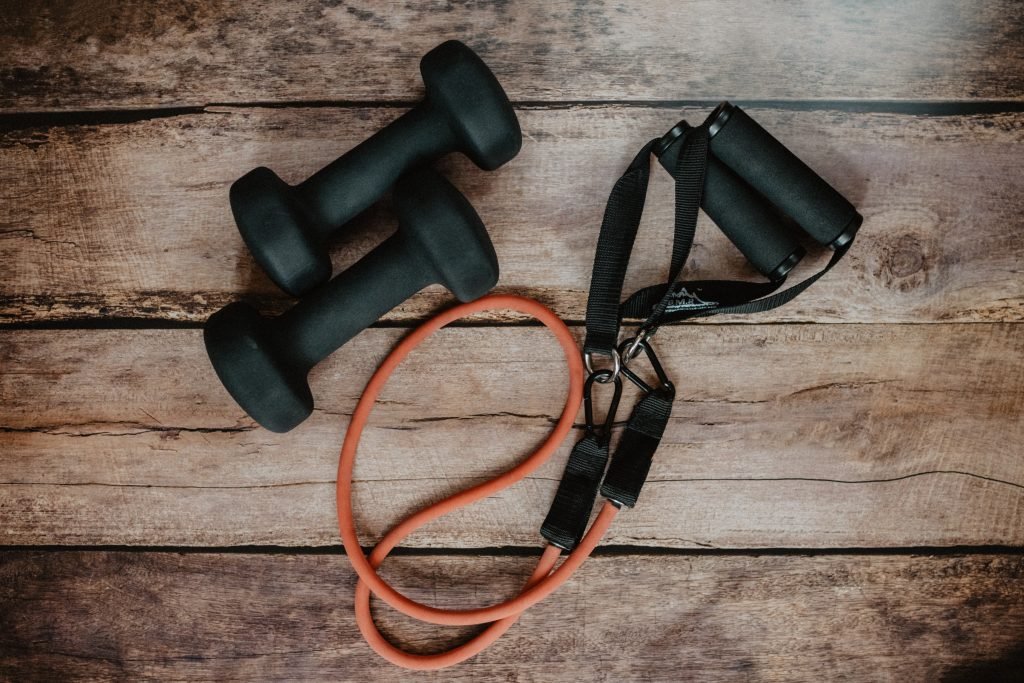
One way to improve your mental health during the pandemic is by exercising. Not only will exercise help you reduce feelings of depression, but it will also help you manage anxiety, and build your immune system. For optimal results, an exercise regime should accompany excellent nutrition.
With social distancing rules in place, many people spend a lot of time at home. Consequently, there are hardly any opportunities for people to engage in physical activity. When at home, most people realize that the environment they’re in allows them to spend a lot of their time sitting or lying down.
Even though it’s essential to follow self-isolation guidelines, it’s equally vital that our bodies and minds are active so that we can function optimally. However, it may not be possible to get a full workout while at home. It’s essential to realize that any kind of physical activity is better than none. Now is the time to think about finally giving some use to your best sneakers for the treadmill and jump on one (if you have one that is).
With many countries being on lockdown, going out for a run or a short walk may be out of the question. But, where there’s a will, there’s a way. Even though you’re stressed out thinking of how you’re going to fit exercise into your routine, there are different ways you can stay fit and healthy in isolation. Here are a few activities you should try that’ll help you maintain fitness at home during the pandemic.
1. Cardiovascular Training
With the risks associated with being sedentary, it’s best to find exercises that’ll get you sweating and get your heart rate up. Even if you have to watch the news or your favorite show while you do it, you can always jog or walk in place. If you’ve got stairs, you can walk up and down till you feel warm. If music energizes you, then dancing is the right exercise for you.
2. Work on Your Core
Some trainers consider the core as the most important group of muscles in the body. The core consists of your abdomen, and exercising it trains the muscles in your pelvis, lower back, stomach, and hip area to work together.
One crucial core exercise you shouldn’t miss in your core training is planks. Planks will force you to work on your whole body and not just your core. If you’re new to planks, start comfortably while on your knees until you can do a full plank that’ll hit the muscles on your lower back and your abdomen.
3. Exercise Your Upper Body
To get your upper body fit, try some push-ups. Push-ups will also work on your core. Push-ups can be a struggle for beginners, but you can do them if you use a wall to support your feet rather than planting your toes painfully on the ground.
Some of the exercises you’re doing may require fitness equipment, so try to work with what you’ve got around the home. In place of barbells for bicep curls, you can use ordinary water bottles to act as your weights.
4. Tone Your Lower Body
Your lower body carries the rest of your body around. Therefore, it’s essential to keep it in shape too. Do a few squats each day. Once you’ve got the hang of it, you can keep increasing the number of squats you do each day by ten reps.
Squats are a great form of exercise because they’ll work the muscles on your feet, butt, and your core. If you’re not confident enough to do squats on your own, try to use a chair or other pieces of furniture for support. For better mobility and balance, you should incorporate lunges into your exercise routine.
Other than your mobility, lunges are the perfect exercise to strengthen your abs. If you’re looking for a more challenging workout, add weights to your lunges by holding them in front of you as you do the lunges.
5. Do Some Yoga
Contrary to popular belief, yoga is an intense exercise. If you’ve got high blood pressure, heart disease, or even diabetes, doing yoga is beneficial to you. Not only does it improve your flexibility, but it’ll enhance your strength and make you more aware of your body.



